 The third full-length album from Yoshimi P-We's female rock quartet, Kila Kila Kila refuses to immediately deliver the goods as generously or bountifully as their previous two albums of densely layered psychedelia. Green and Gold and Feather Float were jam-packed with kaleidoscopic melodies and shimmering guitars, creating thick syrupy whirlpools of hypnotic grooves with saccharine group harmonies and bright, sparkling production. Kila Kila Kila is a more difficult proposition, with Yoshimi P-We veering away from her pop tendencies, preferring instead to emphasize the more abstract and improvisatory elements of her music.
The third full-length album from Yoshimi P-We's female rock quartet, Kila Kila Kila refuses to immediately deliver the goods as generously or bountifully as their previous two albums of densely layered psychedelia. Green and Gold and Feather Float were jam-packed with kaleidoscopic melodies and shimmering guitars, creating thick syrupy whirlpools of hypnotic grooves with saccharine group harmonies and bright, sparkling production. Kila Kila Kila is a more difficult proposition, with Yoshimi P-We veering away from her pop tendencies, preferring instead to emphasize the more abstract and improvisatory elements of her music.
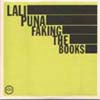 There is no doubt that the pressure has built up for a strong follow-up to the astounding 2001 album Scary World Theory: it was gloriously received by critical acclaim worldwide, followed by trans-continental tours, and a decent amount of well-publicized respect by some of the biggest names in modern rock and pop music.
There is no doubt that the pressure has built up for a strong follow-up to the astounding 2001 album Scary World Theory: it was gloriously received by critical acclaim worldwide, followed by trans-continental tours, and a decent amount of well-publicized respect by some of the biggest names in modern rock and pop music.
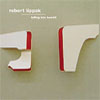 Robert Lippok (To Rococo Rot) has taken Komëit's (Julia Kliemann and Chris Flor) recording "Falling into Place" apart to remodel its contents. He's kept the essential vocals, guitar lines and other critical signatures from the original and just enhanced their lightness of being.
Robert Lippok (To Rococo Rot) has taken Komëit's (Julia Kliemann and Chris Flor) recording "Falling into Place" apart to remodel its contents. He's kept the essential vocals, guitar lines and other critical signatures from the original and just enhanced their lightness of being.
 Drew Daniel and MC Schmidt's two albums last year both represented departures from their trademark audio strategies. The Civil Warsaw the duo incorporating medieval and American folk elements into aseries of pastoral compositions while The Soft Pink Truth's Do You Party? was Drew Daniel's unique take on leftfield digital disco and bottom-heavy electro. Rat Relocation Programis a return of sorts to the old conceptual bag of tricks; a briefexperimental EP that utilizes the microtonal sampling techniquesfamiliar from Matmos' antebellum days. Slightly less academic than the"amplified neural activity of a crayfish" stuff the duo is known for,the sounds on this release were drawn from recordings of a rat humanelycaptured in the couple's San Francisco apartment. This descriptionimmediately recalls "For Felix (And All the Rats)," a track off of2001's A Chance to Cut is a Chance to Cure that was constructedfrom the bowed and plucked ribcage of their deceased pet rat. Becausethis is volume six in the Locust's Met Life series of "field recordingsand ingenious sound responses," it consists of two tracks: theunaltered recording of the rat protesting its incarceration, andMatmos' digitally processed musical response. I doubt anyone would wantto listen to the fourteen minutes of "Rat" more than once, consistingas it does entirely of piercing rodent shrieks and the sound of tinyclaws trying to breach the metal bars of its cage, with long silencesin between. "Rat Relocation" is a different animal entirely, a longformaudio narrative that preserves the poor creature's squawking, butanswers each shrill cry with a measured electronic response rangingfrom sudden attacks of pummeling drum n' bass, to psychedelic funkexcursions, to minutely detailed DSP fractures that sprinkle the stereochannels with fractal debris. The track feels strangely narrative amidits abstractions, not dissimilar to some of Nurse With Wound's moremercurial sidelong tracks. A clear empathy is created between themusicians and their captured pest, as Matmos attempt to vividlyillustrate the hardwired fight-or-flight instincts of a rat trying toescape its captors, whether they be pacifist animal-loving bohemians orwhite-coated lab technicians. It's an epic on a microcosmic scale.
Drew Daniel and MC Schmidt's two albums last year both represented departures from their trademark audio strategies. The Civil Warsaw the duo incorporating medieval and American folk elements into aseries of pastoral compositions while The Soft Pink Truth's Do You Party? was Drew Daniel's unique take on leftfield digital disco and bottom-heavy electro. Rat Relocation Programis a return of sorts to the old conceptual bag of tricks; a briefexperimental EP that utilizes the microtonal sampling techniquesfamiliar from Matmos' antebellum days. Slightly less academic than the"amplified neural activity of a crayfish" stuff the duo is known for,the sounds on this release were drawn from recordings of a rat humanelycaptured in the couple's San Francisco apartment. This descriptionimmediately recalls "For Felix (And All the Rats)," a track off of2001's A Chance to Cut is a Chance to Cure that was constructedfrom the bowed and plucked ribcage of their deceased pet rat. Becausethis is volume six in the Locust's Met Life series of "field recordingsand ingenious sound responses," it consists of two tracks: theunaltered recording of the rat protesting its incarceration, andMatmos' digitally processed musical response. I doubt anyone would wantto listen to the fourteen minutes of "Rat" more than once, consistingas it does entirely of piercing rodent shrieks and the sound of tinyclaws trying to breach the metal bars of its cage, with long silencesin between. "Rat Relocation" is a different animal entirely, a longformaudio narrative that preserves the poor creature's squawking, butanswers each shrill cry with a measured electronic response rangingfrom sudden attacks of pummeling drum n' bass, to psychedelic funkexcursions, to minutely detailed DSP fractures that sprinkle the stereochannels with fractal debris. The track feels strangely narrative amidits abstractions, not dissimilar to some of Nurse With Wound's moremercurial sidelong tracks. A clear empathy is created between themusicians and their captured pest, as Matmos attempt to vividlyillustrate the hardwired fight-or-flight instincts of a rat trying toescape its captors, whether they be pacifist animal-loving bohemians orwhite-coated lab technicians. It's an epic on a microcosmic scale. Compiling a various artists collection isn't easy, especially for avery young label with a wide array of styles in mind and nobleintentions in their heart. Over three years after the passing ofJonathan Hicks, this collection has surfaced, featuring over two hoursof exclusive audio contributions from much admired acts like Tarantel,The Album Leaf, Jessica Bailiff, and Her Space Holiday, along with ahost of relative unknowns like Moonpony, The Potomac Accord, and UnwedSailor. Jonathan Hicks was a young man from Indiana who lost his battleto a rare cancer at the age of 23. Chris Bennett, an amateurphotographer/filmmaker made a short film entirely in Super 8mmfeaturing Jonathan, still alive and recently diagnosed, and completedit with the intentions of leaving his family an "etheral portrait ofJonathan." The film was sent to various musicians to make soundtracksfor the short film, and the submissions are amazing. While most of themusicians probably didn't know Jonathan, they have provided honorablesounds to go along with the film, from Tommy Guerrero's analogue beatsto the melancholy acoustic guitar and banjo work from Your Friend;pulsing electronic synths of Mikael Jorgensen to echoed piano, violin,and drums from Early Day Miners. Tunes like the Album Leaf's"Jonathan's Song" are simple yet rich with a beautiful sadness, whilethe compilation's closer, "Figure Eight," from Jessica Bailiff ispossibly one of the most chilling, yet wacked out pieces I've everheard bleed from her guitar. Additionally, the silent film is includedto play along with a favorite submission or to simply watch in silence.Most of the people who end up with this collection will never knowJonathan Hicks, but he must have been special enough for somebody to beas dedicated to see this project through to completion. Proceeds fromthe sale of the compilation will be donated in Jonathan Hicks' honor tothe Children's Inn in Behtesda, Maryland, a place where Jonathanreceived treatments for over two years.
Compiling a various artists collection isn't easy, especially for avery young label with a wide array of styles in mind and nobleintentions in their heart. Over three years after the passing ofJonathan Hicks, this collection has surfaced, featuring over two hoursof exclusive audio contributions from much admired acts like Tarantel,The Album Leaf, Jessica Bailiff, and Her Space Holiday, along with ahost of relative unknowns like Moonpony, The Potomac Accord, and UnwedSailor. Jonathan Hicks was a young man from Indiana who lost his battleto a rare cancer at the age of 23. Chris Bennett, an amateurphotographer/filmmaker made a short film entirely in Super 8mmfeaturing Jonathan, still alive and recently diagnosed, and completedit with the intentions of leaving his family an "etheral portrait ofJonathan." The film was sent to various musicians to make soundtracksfor the short film, and the submissions are amazing. While most of themusicians probably didn't know Jonathan, they have provided honorablesounds to go along with the film, from Tommy Guerrero's analogue beatsto the melancholy acoustic guitar and banjo work from Your Friend;pulsing electronic synths of Mikael Jorgensen to echoed piano, violin,and drums from Early Day Miners. Tunes like the Album Leaf's"Jonathan's Song" are simple yet rich with a beautiful sadness, whilethe compilation's closer, "Figure Eight," from Jessica Bailiff ispossibly one of the most chilling, yet wacked out pieces I've everheard bleed from her guitar. Additionally, the silent film is includedto play along with a favorite submission or to simply watch in silence.Most of the people who end up with this collection will never knowJonathan Hicks, but he must have been special enough for somebody to beas dedicated to see this project through to completion. Proceeds fromthe sale of the compilation will be donated in Jonathan Hicks' honor tothe Children's Inn in Behtesda, Maryland, a place where Jonathanreceived treatments for over two years.- Unwed Sailor - Shadows
- The Potomac Accord - For Jonathan
- Mikael Jorgensen - Jonathan
 Sure, Mute are trying to muster up enough support for Throbbing Gristlefor the festival at Camber Sands or to buy those expensive boxed sets,but is this the answer? Mutantis a pointless collection of people who generally bore me to tears likeCarl Craig, who's version of "Hot on the Heels of Love" does nearlynothing to the original other than loop a couple parts for an endlesslydrawn out house tune which goes nowhere. Two Lone Swordsmen don'treally remix "United" but do a lame ass cover which is equally asboring as Carl Craig, but, well, completely nauseating too. There havealready been three full-length albums of TG cover tunes: Entertainment Through Pain on RRRecords, We Hate You CD+7" on the Norwegian Jazzassin label, and In-Formationon Attention Defecit Recordings (later issued by Invisible); and allthree got the point: they're all entertaining while being completelypainful. As for the remixers collected here: Simon Ratcliffe: crap;Hedonastik: crap; Motor: crap! Carter-Tutti: didn't they alreadyremix/reinterpret TG on the EAR releases a couple years ago as Chrisand Cosey? I actually liked those versions. The second Carl Craig mixcomes around and opens with a little bit of promise, but it seems theonly thing he discovered in this version is the echo/reverb unit andpanning. Maybe I'm completely wrong, but I don't think TG was abouthomogenization on the dance floor, but completely hijacking culture. Atleast with Mute's Can remix album, Sacrilege, there were plentyof remixes so far removed and individualized and re-interpretized, thata lot of tracks stood on their own merits. Even the "Yashar" and "Nag,Nag, Nag" remixes of Cabaret Voltaire were pretty good. Maybe with thearsenal of talent at NovaMute's fingertips, something good could havebeen made, but this is just utter crap. Save the agony of 52 minutesand download the 60 second version free from Mute's site and enjoy allof this rolled up into one mix.
Sure, Mute are trying to muster up enough support for Throbbing Gristlefor the festival at Camber Sands or to buy those expensive boxed sets,but is this the answer? Mutantis a pointless collection of people who generally bore me to tears likeCarl Craig, who's version of "Hot on the Heels of Love" does nearlynothing to the original other than loop a couple parts for an endlesslydrawn out house tune which goes nowhere. Two Lone Swordsmen don'treally remix "United" but do a lame ass cover which is equally asboring as Carl Craig, but, well, completely nauseating too. There havealready been three full-length albums of TG cover tunes: Entertainment Through Pain on RRRecords, We Hate You CD+7" on the Norwegian Jazzassin label, and In-Formationon Attention Defecit Recordings (later issued by Invisible); and allthree got the point: they're all entertaining while being completelypainful. As for the remixers collected here: Simon Ratcliffe: crap;Hedonastik: crap; Motor: crap! Carter-Tutti: didn't they alreadyremix/reinterpret TG on the EAR releases a couple years ago as Chrisand Cosey? I actually liked those versions. The second Carl Craig mixcomes around and opens with a little bit of promise, but it seems theonly thing he discovered in this version is the echo/reverb unit andpanning. Maybe I'm completely wrong, but I don't think TG was abouthomogenization on the dance floor, but completely hijacking culture. Atleast with Mute's Can remix album, Sacrilege, there were plentyof remixes so far removed and individualized and re-interpretized, thata lot of tracks stood on their own merits. Even the "Yashar" and "Nag,Nag, Nag" remixes of Cabaret Voltaire were pretty good. Maybe with thearsenal of talent at NovaMute's fingertips, something good could havebeen made, but this is just utter crap. Save the agony of 52 minutesand download the 60 second version free from Mute's site and enjoy allof this rolled up into one mix.  Somebody was right when they thought, "you know, we're really going topiss some fans off with this one." I don't mind so much the twopiano-only bits which hint at a person taking a collegiate levelcomposition course, but the songs that have been the Clientele'sstrength for years are nearly completely absent. The new EP on Spain'sAcuarela label is inspired by the paintings of Giorgio de Chirico andcould have been either left in the group's archives or filtered in to afuture album. As a standalone EP, however, it's completely avoidable.The first real song, "Summer Crowds in Europe," is way too short andinstrumental. It's the pretty fanfare Clientele are good at with aresonant guitar leading a talented bassline and steady drum. However,the EP's middle piece can be completely thrown away. I have listened toa number of drones in my lifetime and will occasionally love them, but"The Sea Inside a Shell" completely sucks beyond belief. It's somebodysitting at an organ for 8½ minutes, adding one note at a time until thething's a complete unlistenable mess. (God my ears hurt more than thenew Pan Sonic record at only three minutes into the track!) This couldbe the longest 8.5 minute track known to man. (Only once have I made itthrough without skipping the track.) The second piano bit follows andfinally, at last (and after what seems too long), the group emerge withtheir only vocal track, "Impossible," which could easily make theirnext album great. The price of admission for this EP isn't worth it,however.
Somebody was right when they thought, "you know, we're really going topiss some fans off with this one." I don't mind so much the twopiano-only bits which hint at a person taking a collegiate levelcomposition course, but the songs that have been the Clientele'sstrength for years are nearly completely absent. The new EP on Spain'sAcuarela label is inspired by the paintings of Giorgio de Chirico andcould have been either left in the group's archives or filtered in to afuture album. As a standalone EP, however, it's completely avoidable.The first real song, "Summer Crowds in Europe," is way too short andinstrumental. It's the pretty fanfare Clientele are good at with aresonant guitar leading a talented bassline and steady drum. However,the EP's middle piece can be completely thrown away. I have listened toa number of drones in my lifetime and will occasionally love them, but"The Sea Inside a Shell" completely sucks beyond belief. It's somebodysitting at an organ for 8½ minutes, adding one note at a time until thething's a complete unlistenable mess. (God my ears hurt more than thenew Pan Sonic record at only three minutes into the track!) This couldbe the longest 8.5 minute track known to man. (Only once have I made itthrough without skipping the track.) The second piano bit follows andfinally, at last (and after what seems too long), the group emerge withtheir only vocal track, "Impossible," which could easily make theirnext album great. The price of admission for this EP isn't worth it,however.  I'm not usually one to buy DJ Kicks or DJ mix records but when I saw this collection from the Kompakt label boss sitting in the used bin, I couldn't refuse. Usually, these collections are from artists, who, more often than expected, have pretty poor taste in music and rarely acknowledge any of their contemporaries. It often results in a comp which is of friends and buddies and doesn't hold together nicely as a unit. Meyer, on the other hand, being the head of a label I adore, is an interesting pick, as with his picks, he might choose a bunch of stuff he likes but wouldn't find a place for on his label.
I'm not usually one to buy DJ Kicks or DJ mix records but when I saw this collection from the Kompakt label boss sitting in the used bin, I couldn't refuse. Usually, these collections are from artists, who, more often than expected, have pretty poor taste in music and rarely acknowledge any of their contemporaries. It often results in a comp which is of friends and buddies and doesn't hold together nicely as a unit. Meyer, on the other hand, being the head of a label I adore, is an interesting pick, as with his picks, he might choose a bunch of stuff he likes but wouldn't find a place for on his label.
 Ten tracks of soulful, sophisticated synthpop by a Canadian trio withthe cleverly unassuming name of Junior Boys might well be exactly whatthe world needs now. Recent attempts at reviving the urbane electropopof Depeche Mode, Pet Shop Boys and The Human League—by Erlend Øye, ThePostal Service, and even The Human League themselves—have beenhalfhearted and largely uninspired. In their painstaking efforts torecreate the sparkling synthetic tones, drum machine rhythms anddetached vocal style of 80's new wave, they seem to have completelyforgotten about the qualities of innovation, creativity and originalitywhich were the original watchwords of the new wave. Luckily, JuniorBoys have not repeated these mistakes. Understanding the importance ofthe word "new" in the term "new wave," their Birthday and High Come DownEPs were beautifully crafted works of startling freshness, merging theromantic, cultivated elegance of David Sylvian's Japan with the jiggy,imaginative beat constructions of Timbaland. Now comes theirfull-length album on KIN Records, combining both EPs and adding a fewnew tracks. Pop music hasn't sounded this inventive and accomplishedsince New Order released Power, Corruption and Lies. I'm notexaggerating; I've had this record on constant rotation since Ireceived it, and it continues to reveal new charms and ingeniousdimensions with each listen. As I write this, I'm listening to "HighCome Down," a stuttering, off-kilter beat with staccato bass hits andhigh-end synth flutters. Jeremy Greenspan wraps his soulful,androgynous voice around a sad, fragile lyric that recalls the finestby Marc Almond or Dave Gahan. Junior Boys appreciate the value ofsilence and space, and they keep their songs refreshingly unadorned byextraneous composition, analogous perhaps to European MicroHouseartists but without the same annoyingly rigorous asceticism. There aresubtle sonic flourishes that seep into the music almost subliminally -a rattling dub echo or a synthesized chorus that underscores eachbreathy vocal refrain. Of the ten tracks on Last Exit, abouthalf are pure pop genius, and the others aren't too shabby either."Under the Sun" is a song that I keep returning to, a hypnoticseven-minute synthscape with one line repeated like a mantra: "You'rethe sweet one/The sweet one under the sun." This is repeated,trance-like, over a dark, Moroder-esque disco groove that slowlyunfolds to reveal a bright vista of clouds and sun. Junior Boys havecreated an impressive debut album that goes on my shelf right next to Violator, Dare, and Architecture and Morality.
Ten tracks of soulful, sophisticated synthpop by a Canadian trio withthe cleverly unassuming name of Junior Boys might well be exactly whatthe world needs now. Recent attempts at reviving the urbane electropopof Depeche Mode, Pet Shop Boys and The Human League—by Erlend Øye, ThePostal Service, and even The Human League themselves—have beenhalfhearted and largely uninspired. In their painstaking efforts torecreate the sparkling synthetic tones, drum machine rhythms anddetached vocal style of 80's new wave, they seem to have completelyforgotten about the qualities of innovation, creativity and originalitywhich were the original watchwords of the new wave. Luckily, JuniorBoys have not repeated these mistakes. Understanding the importance ofthe word "new" in the term "new wave," their Birthday and High Come DownEPs were beautifully crafted works of startling freshness, merging theromantic, cultivated elegance of David Sylvian's Japan with the jiggy,imaginative beat constructions of Timbaland. Now comes theirfull-length album on KIN Records, combining both EPs and adding a fewnew tracks. Pop music hasn't sounded this inventive and accomplishedsince New Order released Power, Corruption and Lies. I'm notexaggerating; I've had this record on constant rotation since Ireceived it, and it continues to reveal new charms and ingeniousdimensions with each listen. As I write this, I'm listening to "HighCome Down," a stuttering, off-kilter beat with staccato bass hits andhigh-end synth flutters. Jeremy Greenspan wraps his soulful,androgynous voice around a sad, fragile lyric that recalls the finestby Marc Almond or Dave Gahan. Junior Boys appreciate the value ofsilence and space, and they keep their songs refreshingly unadorned byextraneous composition, analogous perhaps to European MicroHouseartists but without the same annoyingly rigorous asceticism. There aresubtle sonic flourishes that seep into the music almost subliminally -a rattling dub echo or a synthesized chorus that underscores eachbreathy vocal refrain. Of the ten tracks on Last Exit, abouthalf are pure pop genius, and the others aren't too shabby either."Under the Sun" is a song that I keep returning to, a hypnoticseven-minute synthscape with one line repeated like a mantra: "You'rethe sweet one/The sweet one under the sun." This is repeated,trance-like, over a dark, Moroder-esque disco groove that slowlyunfolds to reveal a bright vista of clouds and sun. Junior Boys havecreated an impressive debut album that goes on my shelf right next to Violator, Dare, and Architecture and Morality. Bruno Nicolai, "Perche Quelle Strane Gocce di Sangue sul Corpo di Jennifer?" and "Il Tuo Vizio E una
A small Italian record label has answered the prayers of eurocult filmand soundtrack fans everywhere. As part of their new series "BrunoNicolai in Giallo," Digitmovies has just released the scores to twoobscure 1972 thrillers bearing the unwieldy titles of Perche Quelle Strane Gocce di Sangue sul Corpo di Jennifer? (What Are Those Strange Drops of Blood on Jennifer's Body) and Il Tuo Vizio E una Stanza Chiusa e Solo Io Ne Ho la Chiave (Your Vice Is a Locked Room and Only I Have the Key).Composer Bruno Nicolai's career has often been overshadowed by fellowcountryman Ennio Morricone, for whose scores Nicolai often served asconductor, but slowly his own extensive body of film music is beginningto see the light of day decades later. These two discs mark the firstrelease ever of this music apart from the films, are digitallyremastered, and both contain extra material from the recording sessionsthat were ultimately unused.
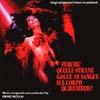 The plot of Perche Quelle Strane ... involves a cheesecake photo model in a swingin' Italian metropolis whobecomes the target of a mysterious serial murderer. Nicolai'seffervescent theme is perhaps among the most catchy tunes of hisrepetoire, bouncing its way through scenes of sexy photo shoots andflirtatious rendezvous. From there, the mood changes to outrightcongo-driven exotica for a strip-show-turned-wresting-match, but movesswiftly on to rapidly pulsating strings and funky base as the bodycountbegins to build. Nicolai adds creative flourishes to the mix like asoulful violin solo which ties in excellently with the plot twistswithin the film.
The plot of Perche Quelle Strane ... involves a cheesecake photo model in a swingin' Italian metropolis whobecomes the target of a mysterious serial murderer. Nicolai'seffervescent theme is perhaps among the most catchy tunes of hisrepetoire, bouncing its way through scenes of sexy photo shoots andflirtatious rendezvous. From there, the mood changes to outrightcongo-driven exotica for a strip-show-turned-wresting-match, but movesswiftly on to rapidly pulsating strings and funky base as the bodycountbegins to build. Nicolai adds creative flourishes to the mix like asoulful violin solo which ties in excellently with the plot twistswithin the film.samples:
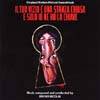 Il Tuo Vizio, composed for a very liberal film adaptation ofEdgar Allen Poe's "The Black Cat," is accordingly somber and sinister,with more of a classical influence than Perche Quelle Strane.Its themes alternate between two slow movements using harpsicord andoboe with hints of harp and a multitude of strings, and create a moodthat is haunting and seductive. There are, of course, energetic burstswhen the tension is heightened. The results are beautiful, chilling,and often romantic. The pieces at times sound as if they could haveinfluenced Angelo Badalamenti's score for Blue Velvet or In TheNursery's delicate orchestrations. Because each of the releases arebased on one or two primary themes, listening to each as a whole feelrepetitive on an initial listen. But once carried away, it's hardlynoticable. Not only that, but it's entirely possible you'll be hummingthem in your head for days afterwards.
Il Tuo Vizio, composed for a very liberal film adaptation ofEdgar Allen Poe's "The Black Cat," is accordingly somber and sinister,with more of a classical influence than Perche Quelle Strane.Its themes alternate between two slow movements using harpsicord andoboe with hints of harp and a multitude of strings, and create a moodthat is haunting and seductive. There are, of course, energetic burstswhen the tension is heightened. The results are beautiful, chilling,and often romantic. The pieces at times sound as if they could haveinfluenced Angelo Badalamenti's score for Blue Velvet or In TheNursery's delicate orchestrations. Because each of the releases arebased on one or two primary themes, listening to each as a whole feelrepetitive on an initial listen. But once carried away, it's hardlynoticable. Not only that, but it's entirely possible you'll be hummingthem in your head for days afterwards.
 The howling winds which open MíQ's third full-length record areominously foreshadowing of what lies within. The group, now down to acore trio, have moved even further away from their first releases ofpretty prancing techno fairies sprinkling happy dust over the morningdew, delving into deeper exploration of a more sad beauty that doesn'tcome without a sting. It's like admiring the beauty of the blue sky andbright sunlight after drowning, sinking to the bottom of the ocean. Thefirst real song, for example, even aches of sadness with the titlealone, "Weeping Rock, Rock," and with an arsenal of instruments, thesound swells to a thick heaviness the group only let bleed throughoccasionally on 2002's Finally We Are No One.In the studio this time are live drums and percussion, guitar andbanjo, mandolin, accordion, organ, horns, strings, and plenty ofunidentifiable objects while the digital glitchery has been reduced toa bare minimum, used only ever subtly for effect. Taking center stageis the even more matured, bold choices the group is taking with songstructure and production. Whispery vocals are brought to theforeground, allowing for every imperfection to be audible. Imperfection is, after all, what makes humans distinct from each other.The album's first single, "Nightly Cares," should be an indication forthose lucky enough to find it, as it moves slowly, with doubled vocalsand airbrushed drums and a muted trumpet that reminds me Mark Hollis isoverdue for a second solo album. Fans of the first releases should bewarned: MíQ have created a record which is almost completely void ofpredictable pop ditties that make for crossover radio hits, despitevocals appearing on nearly every song. Perhaps the group has taken someinfluence from the uprising in bands to challenge the almighty popstructure. Unlike a lot of their contemporaries, MíQ have effectivelybalanced that stretch for originality with a listen that's equally ascaptivating. Often times, things seem almost alien in nature, withbleak reality distortions that could even give Matt Elliott theshivers. MíQ have succeeded in making an album that's very shy atfirst, unassuming and timid. But, with a growing curiosity and opennessfrom the listener, bit by bit, more gets revealed, and I'm stilllearning. Those who appreciate a nice package might want to hold offthis week as some limited edition version in a book is due out butdelayed due to manufacturing issues of some kind
The howling winds which open MíQ's third full-length record areominously foreshadowing of what lies within. The group, now down to acore trio, have moved even further away from their first releases ofpretty prancing techno fairies sprinkling happy dust over the morningdew, delving into deeper exploration of a more sad beauty that doesn'tcome without a sting. It's like admiring the beauty of the blue sky andbright sunlight after drowning, sinking to the bottom of the ocean. Thefirst real song, for example, even aches of sadness with the titlealone, "Weeping Rock, Rock," and with an arsenal of instruments, thesound swells to a thick heaviness the group only let bleed throughoccasionally on 2002's Finally We Are No One.In the studio this time are live drums and percussion, guitar andbanjo, mandolin, accordion, organ, horns, strings, and plenty ofunidentifiable objects while the digital glitchery has been reduced toa bare minimum, used only ever subtly for effect. Taking center stageis the even more matured, bold choices the group is taking with songstructure and production. Whispery vocals are brought to theforeground, allowing for every imperfection to be audible. Imperfection is, after all, what makes humans distinct from each other.The album's first single, "Nightly Cares," should be an indication forthose lucky enough to find it, as it moves slowly, with doubled vocalsand airbrushed drums and a muted trumpet that reminds me Mark Hollis isoverdue for a second solo album. Fans of the first releases should bewarned: MíQ have created a record which is almost completely void ofpredictable pop ditties that make for crossover radio hits, despitevocals appearing on nearly every song. Perhaps the group has taken someinfluence from the uprising in bands to challenge the almighty popstructure. Unlike a lot of their contemporaries, MíQ have effectivelybalanced that stretch for originality with a listen that's equally ascaptivating. Often times, things seem almost alien in nature, withbleak reality distortions that could even give Matt Elliott theshivers. MíQ have succeeded in making an album that's very shy atfirst, unassuming and timid. But, with a growing curiosity and opennessfrom the listener, bit by bit, more gets revealed, and I'm stilllearning. Those who appreciate a nice package might want to hold offthis week as some limited edition version in a book is due out butdelayed due to manufacturing issues of some kind Tortoise are the undisputed heavyweights of that hopelesslyoverpopulated field of instrumental music dubbed post-rock. Aftervirtually christening the genre with their 1994 debut, then pushing outthe boundaries with the superlative Millions Now Living Will Never Die, Tortoise seem somewhat content to rest on their laurels. Their new effort, It's All Around You, the band's first full-length album since 2001's Standards, shows the band attempting new strategies, and falling back on old reliable techniques. Following a similar blueprint to Standards, this new album is yet another step back from the techno and dub influences that saturated Millions and TNT;most digital processing has been concealed in favor of stressing thetypically harmonious group dynamic. The deliciously over-mic'd drums,distorted keyboards and fuzzy guitars of Standards have beencarried over into this album. As ever, producer John McEntire isextraordinarily proficient in his ability to turn what amounts tohigh-concept elevator music into alchemical gold. If Krautrock, dub andIDM influences flavored their past efforts, the primary inspiration on It's All Around Youappears to be film music. Many of these tracks have an epic, cinematicsweep redolent of film composers like Ennio Morricone and Nino Rota."Crest" swells and subsides along with emotive string arrangements,with squalls of anthemic guitar punctuating each passage, like Hendrixjamming along to a soap opera soundtrack. The album maintains aconsistent MOR sunshine-pop vibe, with a sparkling atmosphere ofheroism and patriotic grandeur. The sampled chorus of breathy "aahs" on"The Lithium Stiffs" recalls the atmospheric light-rock of 10CC's "I'mNot in Love," not exactly a popular reference point for cutting-edgeindie rock. Much care has been taken in sequencing these songs, withthe first half of the album threaded together into a continuousnarrative. "Stretch (You Are All Right)" is pure Tortoise-by-numbers,with its point-counterpoint conversation between vibraphones andguitar. The songs on this album seem more composed than ever before,excising the elements of chance and improvisation almost entirely. Thisresults in an album that at times feels a bit calculated andover-composed, the same problems that have plagued recent efforts byStereolab. However, with musicians as talented as Tortoise, even aneffortlessly tossed-off record like this one can prove to be quiteengaging. Although the album loses much of its momentum in its lasthalf, "Salt the Skies" reconnects with the themes from the opening songsuite and serves as a fittingly bombastic conclusion. There is no doubtwhatever that Tortoise are an immensely gifted group of musicians, andit seems a shame to complain that an album as lovely and accomplishedas It's All Around You seems phoned in, so I'm not going to. I'm just going to shut up and listen to it.
Tortoise are the undisputed heavyweights of that hopelesslyoverpopulated field of instrumental music dubbed post-rock. Aftervirtually christening the genre with their 1994 debut, then pushing outthe boundaries with the superlative Millions Now Living Will Never Die, Tortoise seem somewhat content to rest on their laurels. Their new effort, It's All Around You, the band's first full-length album since 2001's Standards, shows the band attempting new strategies, and falling back on old reliable techniques. Following a similar blueprint to Standards, this new album is yet another step back from the techno and dub influences that saturated Millions and TNT;most digital processing has been concealed in favor of stressing thetypically harmonious group dynamic. The deliciously over-mic'd drums,distorted keyboards and fuzzy guitars of Standards have beencarried over into this album. As ever, producer John McEntire isextraordinarily proficient in his ability to turn what amounts tohigh-concept elevator music into alchemical gold. If Krautrock, dub andIDM influences flavored their past efforts, the primary inspiration on It's All Around Youappears to be film music. Many of these tracks have an epic, cinematicsweep redolent of film composers like Ennio Morricone and Nino Rota."Crest" swells and subsides along with emotive string arrangements,with squalls of anthemic guitar punctuating each passage, like Hendrixjamming along to a soap opera soundtrack. The album maintains aconsistent MOR sunshine-pop vibe, with a sparkling atmosphere ofheroism and patriotic grandeur. The sampled chorus of breathy "aahs" on"The Lithium Stiffs" recalls the atmospheric light-rock of 10CC's "I'mNot in Love," not exactly a popular reference point for cutting-edgeindie rock. Much care has been taken in sequencing these songs, withthe first half of the album threaded together into a continuousnarrative. "Stretch (You Are All Right)" is pure Tortoise-by-numbers,with its point-counterpoint conversation between vibraphones andguitar. The songs on this album seem more composed than ever before,excising the elements of chance and improvisation almost entirely. Thisresults in an album that at times feels a bit calculated andover-composed, the same problems that have plagued recent efforts byStereolab. However, with musicians as talented as Tortoise, even aneffortlessly tossed-off record like this one can prove to be quiteengaging. Although the album loses much of its momentum in its lasthalf, "Salt the Skies" reconnects with the themes from the opening songsuite and serves as a fittingly bombastic conclusion. There is no doubtwhatever that Tortoise are an immensely gifted group of musicians, andit seems a shame to complain that an album as lovely and accomplishedas It's All Around You seems phoned in, so I'm not going to. I'm just going to shut up and listen to it. 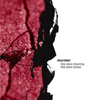 They Were Dreaming They Were Stones can't be considered apurist's field recording composition, as Murmer's Patrick McGinley doesincorporate "operated" devices like a car seat massager and telephonefeedback/ringtone; however the majority of the five-part piece wasgathered from locations as idiosyncratic and rich with colorfulassociations as the resulting music. McGinley takes sound from elevatorshafts, airplane cabins, a Turkish football victory celebration,Hewlitt's Cove Marina in Massachusetts and the Brooklyn Bridge amongother disparate spots, transforming them into a diverse current ofnoise dominated by thin drones and loose textural scatter, never busyand nicely blended. The artist seems more interested in creating musicwith its own private momentum and internal reference points thaninstigating the kind of environmental illusionism or detail-oriented,"investigative" technique common to the field medium. Even afterreading the liner notes and discovering the origins of McGinley'srecordings, it remains near-impossible to pin certain sounds onparticular sources to the exclusion of all others. When, at the end of Stones'"Prologue," traffic sounds from the Brooklyn Bridge begin to interruptthe shrill tones of telephone(!) feedback, the cars are far fromdisruptive, hardly cars at all and more suggestive of the low rumblesthat come from the 600-gallon steel watertank that appears in "PartFour." The creaking wood and chiming mast sounds from the marina in"Part Three" only reveal themselves when thrown into relief against thevacuous thudding of the elevator shaft, which could itself be thewatertank or part of the airplane's ghostly interior. Through carefultiming and expert fades, McGinley manages these discrepancies withoutmaking the resulting confusion the focus of the piece. The artistmatches the rhythmic and tonal structures of his individual segments,splicing them together so that points of flux do not emerge arbitrarilywith the chance swells of a particular component but at calculated andanticipated moments in the whole. Recognizable melodic turns, viaringtones presumably, reappear throughout several parts, reinforcingthe involved, almost symphonic character of Stones. Only once,during the piece's first part does McGinley run into trouble. Thecyclical rhythm of an old gas meter in his basement provides thedominant noise during this part, and the artist could've tried harderto submerge the meter in the surrounding atmospherics, as the rhythm,while appealing, stands out as too forced or persuasive an elementwithin the otherwise sublime, organic progression. McGinley recoverswith the longer, climactic "Part Four," which (somehow) drives theaforementioned watertank and cabin ambience into a heavenly chorus ofdroning activity, almost Eno-esque in its resounding warmth.
They Were Dreaming They Were Stones can't be considered apurist's field recording composition, as Murmer's Patrick McGinley doesincorporate "operated" devices like a car seat massager and telephonefeedback/ringtone; however the majority of the five-part piece wasgathered from locations as idiosyncratic and rich with colorfulassociations as the resulting music. McGinley takes sound from elevatorshafts, airplane cabins, a Turkish football victory celebration,Hewlitt's Cove Marina in Massachusetts and the Brooklyn Bridge amongother disparate spots, transforming them into a diverse current ofnoise dominated by thin drones and loose textural scatter, never busyand nicely blended. The artist seems more interested in creating musicwith its own private momentum and internal reference points thaninstigating the kind of environmental illusionism or detail-oriented,"investigative" technique common to the field medium. Even afterreading the liner notes and discovering the origins of McGinley'srecordings, it remains near-impossible to pin certain sounds onparticular sources to the exclusion of all others. When, at the end of Stones'"Prologue," traffic sounds from the Brooklyn Bridge begin to interruptthe shrill tones of telephone(!) feedback, the cars are far fromdisruptive, hardly cars at all and more suggestive of the low rumblesthat come from the 600-gallon steel watertank that appears in "PartFour." The creaking wood and chiming mast sounds from the marina in"Part Three" only reveal themselves when thrown into relief against thevacuous thudding of the elevator shaft, which could itself be thewatertank or part of the airplane's ghostly interior. Through carefultiming and expert fades, McGinley manages these discrepancies withoutmaking the resulting confusion the focus of the piece. The artistmatches the rhythmic and tonal structures of his individual segments,splicing them together so that points of flux do not emerge arbitrarilywith the chance swells of a particular component but at calculated andanticipated moments in the whole. Recognizable melodic turns, viaringtones presumably, reappear throughout several parts, reinforcingthe involved, almost symphonic character of Stones. Only once,during the piece's first part does McGinley run into trouble. Thecyclical rhythm of an old gas meter in his basement provides thedominant noise during this part, and the artist could've tried harderto submerge the meter in the surrounding atmospherics, as the rhythm,while appealing, stands out as too forced or persuasive an elementwithin the otherwise sublime, organic progression. McGinley recoverswith the longer, climactic "Part Four," which (somehow) drives theaforementioned watertank and cabin ambience into a heavenly chorus ofdroning activity, almost Eno-esque in its resounding warmth. Peekay Tayloh is actually electronic collage artist PantelisKakaroglou, and his first CD is a valiant effort that sadlyaccomplishes little but reveal some of his influences and portray aderivative style. That's not to say there isn't potential, or that hedoesn't master some amazing beats on the debut, which he doeseffectively and consistently. Peekay Tayloh just utilizes a tried andtrue formula — big beats and jazz structures plus a love for hip-hopwith odd and new sound samples or live instruments mixed in for goodmeasure — without doing something incredibly original with it. There'sa real taste for the talent involved, but an overwhelming feeling of"I've heard this before" clouds the entire release. Sure, there's noway to protect against this sort of thing from time to time, but whenI'd swear I heard the exactsnare or cymbal sound that I've heard on several records, and can evenpull them out for a quick reference listen with no real trouble, I'mnot impressed. I wanted to step into the music with an open mind,however, so I let that go after a while and just basked. A few tracksjust plain smoke, like "Rumbus Rooms to Let," where the track moves ina certain direction but switches it up and puts the pedal to the metaltowards the end. And the use of guest alto sax and vocals wasn'toverpowering, just intriguingly added to the mix, which said that notonly does Peekay Tayloh not ram something down your throat but hechooses artists who will complement not take over the music. The piecesare all there, but the resulting product doesn't make the cut.Interestingly, the last cut is a remix by Beefcake of a track earlieron the record that takes the same elements essentially and ups thewattage by 150%. It's all about showmanship, and for his next projectmaybe Peekay Tayloh will show some more.
Peekay Tayloh is actually electronic collage artist PantelisKakaroglou, and his first CD is a valiant effort that sadlyaccomplishes little but reveal some of his influences and portray aderivative style. That's not to say there isn't potential, or that hedoesn't master some amazing beats on the debut, which he doeseffectively and consistently. Peekay Tayloh just utilizes a tried andtrue formula — big beats and jazz structures plus a love for hip-hopwith odd and new sound samples or live instruments mixed in for goodmeasure — without doing something incredibly original with it. There'sa real taste for the talent involved, but an overwhelming feeling of"I've heard this before" clouds the entire release. Sure, there's noway to protect against this sort of thing from time to time, but whenI'd swear I heard the exactsnare or cymbal sound that I've heard on several records, and can evenpull them out for a quick reference listen with no real trouble, I'mnot impressed. I wanted to step into the music with an open mind,however, so I let that go after a while and just basked. A few tracksjust plain smoke, like "Rumbus Rooms to Let," where the track moves ina certain direction but switches it up and puts the pedal to the metaltowards the end. And the use of guest alto sax and vocals wasn'toverpowering, just intriguingly added to the mix, which said that notonly does Peekay Tayloh not ram something down your throat but hechooses artists who will complement not take over the music. The piecesare all there, but the resulting product doesn't make the cut.Interestingly, the last cut is a remix by Beefcake of a track earlieron the record that takes the same elements essentially and ups thewattage by 150%. It's all about showmanship, and for his next projectmaybe Peekay Tayloh will show some more. 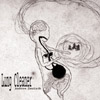 Conceived as a therapeutic agent for Anomalous label head Eric Lanzillotta as he suffered from a serious lung infection, Lung Cleaneris just the kind of dizzying, confused music I'd specifically avoid ifever visited by a similar illness. If the artist's goal was to create aseries of immersing sound-environments for the bedridden, then he'ssucceeded, only these four tracks are hardly comforting, and with nameslike "Dizzy From the Cold Meds" and "Coughing up the Lung Cleaner,"they seem more appropriate for a healthy person looking to simulate theinfected state. If there is any fluidity to the music it's only becausethere is rarely any silence, each moment tempted by multiple layers ofqueasy sound, never very noisy but always arriving at warped,uncomfortable angles. To his credit, Deutsch does take sound from avariety of inviting sources, including wine glasses, bells, musicboxes, even baby toys, each left well enough intact to make forsurprisingly warm, physical compositions, despite the reliance ondigital technology. Certain sections of the disc, especially theopening "Nice Day, Some Rain" with its cascading violin-like washes andgurgling water percussion, sound as if they could be played by bucolicdrone ensemble Pelt; however, Deutsch practices little of that group'srestraint when applying thick, busy layers of amplified clatter fromhis own unique box of gadgets. The degree to which he is able toorganize so many small, fleeting sounds into dense and coherentclusters, without the digital process stripping them of theirlivelihood, remains an amazing feat throughout, but sadly, this is thelimit of Lung Cleaner's appeal. The compositions seem for themost part aimless, with no progressive intent behind their changes inpalette and texture. And while logical progression might be outside ofthe artist's immediate interests, his creations here are too shambolicand scatterbrained for their created environments to be at allsatisfying. There's no release to the aural nausea induced by thesetracks; even the closing "Sleep Fields (go to sleep)" provides nosolace for the sickly, it's slowly repetitive gurgles and pangingnoises winding up again and again for another anxious heave. That said,it is also rare to find music of similar creation that sounds as"alive" as Lung Cleaner, leading me think that either I couldbe trying harder to hear these quasi-"familiar" sounds in new ways orDeutsch should be more wary of the redundancy created in pushingalready animated source material into a frenzied compositionalstructure. Then again, maybe I just need to get violently ill, pound abottle of Robitussin and have another listen, compare and contrast.
Conceived as a therapeutic agent for Anomalous label head Eric Lanzillotta as he suffered from a serious lung infection, Lung Cleaneris just the kind of dizzying, confused music I'd specifically avoid ifever visited by a similar illness. If the artist's goal was to create aseries of immersing sound-environments for the bedridden, then he'ssucceeded, only these four tracks are hardly comforting, and with nameslike "Dizzy From the Cold Meds" and "Coughing up the Lung Cleaner,"they seem more appropriate for a healthy person looking to simulate theinfected state. If there is any fluidity to the music it's only becausethere is rarely any silence, each moment tempted by multiple layers ofqueasy sound, never very noisy but always arriving at warped,uncomfortable angles. To his credit, Deutsch does take sound from avariety of inviting sources, including wine glasses, bells, musicboxes, even baby toys, each left well enough intact to make forsurprisingly warm, physical compositions, despite the reliance ondigital technology. Certain sections of the disc, especially theopening "Nice Day, Some Rain" with its cascading violin-like washes andgurgling water percussion, sound as if they could be played by bucolicdrone ensemble Pelt; however, Deutsch practices little of that group'srestraint when applying thick, busy layers of amplified clatter fromhis own unique box of gadgets. The degree to which he is able toorganize so many small, fleeting sounds into dense and coherentclusters, without the digital process stripping them of theirlivelihood, remains an amazing feat throughout, but sadly, this is thelimit of Lung Cleaner's appeal. The compositions seem for themost part aimless, with no progressive intent behind their changes inpalette and texture. And while logical progression might be outside ofthe artist's immediate interests, his creations here are too shambolicand scatterbrained for their created environments to be at allsatisfying. There's no release to the aural nausea induced by thesetracks; even the closing "Sleep Fields (go to sleep)" provides nosolace for the sickly, it's slowly repetitive gurgles and pangingnoises winding up again and again for another anxious heave. That said,it is also rare to find music of similar creation that sounds as"alive" as Lung Cleaner, leading me think that either I couldbe trying harder to hear these quasi-"familiar" sounds in new ways orDeutsch should be more wary of the redundancy created in pushingalready animated source material into a frenzied compositionalstructure. Then again, maybe I just need to get violently ill, pound abottle of Robitussin and have another listen, compare and contrast.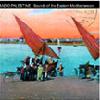 Radio Palestine is the most recent of Alan Bishop's amazingradio collages released on his Sublime Frequencies label. "Palestine"is used here as a blanket term to denote the whole of the EasternMediterranean encompassing the various locations where these soundswere recorded over the summer of 1985. Bishop captures a stunningsnapshot of a region splintered by political upheaval and violence, butunited in its teeming, eclectic overload of cultures, traditions andlifestyles. Radio Palestine cycles through an endless multitude ofdisparate styles: the Nile River Nubian folk of Southern Egypt, modernArabic pop from Beirut, orchestrals from Cairo, Greek sartaki,Palestinian folk, shortwave signal jamming, Jewish Klezmer and othertraditional forms, European pop hybrids, Jordanian reverb guitar andscores of news reports, commercials and radio station IDs in aBabel-like cacophony of languages and dialects. English news reportsprovide grim details of terrorist bombings and political tensions inthe region, clearly showing just how little has changed in theintervening two decades. This prismatic approach to splicing togethermusic and dialogue is extraordinarily effective, juxtaposing absurdlyoverwrought French lounge music from Beirut with minimalist, hypnoticfolk of Egypt which might suddenly and unexpectedly segue intoshortwave radio interceptions of messages from military spies,clandestine political organizations and what sounds like fieldrecordings of gunfire and explosions recorded in the midst of Israeliskirmishes with the PLO. And I was just as likely to hear that kind ofhuman bloodshed as I was to catch a few seconds of Robert Wyatt's "SeaSong" or experimental female vocal pop sounding not unlike a LebaneseKate Bush. "Tangental Psychedelico" contains an amazing performance byan unknown Jordanian artist, calling up the spirits of Islam with theresonant echoes of his desert-surf guitar. Radio Palestine is apowerfully constructed document that forgoes making any politicalstatements, instead painting a painfully ephemeral portrait of acountry in violent flux.
Radio Palestine is the most recent of Alan Bishop's amazingradio collages released on his Sublime Frequencies label. "Palestine"is used here as a blanket term to denote the whole of the EasternMediterranean encompassing the various locations where these soundswere recorded over the summer of 1985. Bishop captures a stunningsnapshot of a region splintered by political upheaval and violence, butunited in its teeming, eclectic overload of cultures, traditions andlifestyles. Radio Palestine cycles through an endless multitude ofdisparate styles: the Nile River Nubian folk of Southern Egypt, modernArabic pop from Beirut, orchestrals from Cairo, Greek sartaki,Palestinian folk, shortwave signal jamming, Jewish Klezmer and othertraditional forms, European pop hybrids, Jordanian reverb guitar andscores of news reports, commercials and radio station IDs in aBabel-like cacophony of languages and dialects. English news reportsprovide grim details of terrorist bombings and political tensions inthe region, clearly showing just how little has changed in theintervening two decades. This prismatic approach to splicing togethermusic and dialogue is extraordinarily effective, juxtaposing absurdlyoverwrought French lounge music from Beirut with minimalist, hypnoticfolk of Egypt which might suddenly and unexpectedly segue intoshortwave radio interceptions of messages from military spies,clandestine political organizations and what sounds like fieldrecordings of gunfire and explosions recorded in the midst of Israeliskirmishes with the PLO. And I was just as likely to hear that kind ofhuman bloodshed as I was to catch a few seconds of Robert Wyatt's "SeaSong" or experimental female vocal pop sounding not unlike a LebaneseKate Bush. "Tangental Psychedelico" contains an amazing performance byan unknown Jordanian artist, calling up the spirits of Islam with theresonant echoes of his desert-surf guitar. Radio Palestine is apowerfully constructed document that forgoes making any politicalstatements, instead painting a painfully ephemeral portrait of acountry in violent flux.  Out of the thousands of tedious archival record labels popping uprecently in this accelerated age of information overload, it's great tofind a label as fascinating as Sublime Frequencies. Alan Bishop of theSun City Girls created Sublime Frequencies as an outlet to releasevideo and sound recordings collected in his travels around the globe.Bishop's release schedule thus far has vividly illustrated his view ofthe third world as an alien landscape, an enticing ethnic cacophony ofmarginalized cultures and traditions, obscure music, vibrantenvironmental noises, hallucinogenic otherness and unraveled threads ofthe human narrative. Alan Bishop neatly sidesteps all of the tiredimplications of "world music" by refusing to editorialize; he simplyreleases unadulterated vintage recordings, impromptu radio collages,untreated field recordings and personal home videos. The recordings arequickly slapped onto the digital format and released with a minimum ofpost-production or fussy packaging. Radio Moroccois the sixth CD released on the Sublime Frequencies imprint, and it'salso one of the most intriguing. Culled from recordings of radiotransmissions intercepted all along the Moroccan coast in the summer of1983, Radio Morocco is a kaleidoscopic trip throughFrench-Moroccan pop, French and Arabic news reports, Berbertrance-folk, Arabic divas, Middle Eastern orchestral music, Europeannew wave, hypnotic jajouka and shortwave radio noise. I was immediatelyreminded of the revolutionary cut-ups produced by William S. Burroughsand Brion Gysin on Break Through in Grey Room that were oftenculled from radio and field recordings from Tangier. Interspersedthroughout are live recordings of Arabic divas like the legendary OumKoulthoum, who perform for an enraptured crowd of men who zealouslyshout "Allah!" at the end of each sexually charged refrain. At varioustimes, Radio Morocco operates as a sonic avatar, an audio timecapsule, a free-form diary through the crossroads of Western Africa, orexpressionist collage. Although Bishop clearly sees Sublime Frequenciesfulfilling the same sort of archival musical preservation function of alabel like Smithsonian Ethnic Folkways, Radio Morocco simplydoesn't work on that level. None of the performers or musical stylesthat we hear throughout the disc are identified in the liner notes, soits historical value is questionable. Instead, Radio Morocco isa postmodern collage of cultures alternately melding and clashing,replicating the fragmented memories of a unique time and place. Uponrepeated listens, these sounds can download into the listener's brainas an anti-virus to an unimaginative, safe and homogenized Westernculture that daily threatens to erase our uniqueness and culturalheritage forever.
Out of the thousands of tedious archival record labels popping uprecently in this accelerated age of information overload, it's great tofind a label as fascinating as Sublime Frequencies. Alan Bishop of theSun City Girls created Sublime Frequencies as an outlet to releasevideo and sound recordings collected in his travels around the globe.Bishop's release schedule thus far has vividly illustrated his view ofthe third world as an alien landscape, an enticing ethnic cacophony ofmarginalized cultures and traditions, obscure music, vibrantenvironmental noises, hallucinogenic otherness and unraveled threads ofthe human narrative. Alan Bishop neatly sidesteps all of the tiredimplications of "world music" by refusing to editorialize; he simplyreleases unadulterated vintage recordings, impromptu radio collages,untreated field recordings and personal home videos. The recordings arequickly slapped onto the digital format and released with a minimum ofpost-production or fussy packaging. Radio Moroccois the sixth CD released on the Sublime Frequencies imprint, and it'salso one of the most intriguing. Culled from recordings of radiotransmissions intercepted all along the Moroccan coast in the summer of1983, Radio Morocco is a kaleidoscopic trip throughFrench-Moroccan pop, French and Arabic news reports, Berbertrance-folk, Arabic divas, Middle Eastern orchestral music, Europeannew wave, hypnotic jajouka and shortwave radio noise. I was immediatelyreminded of the revolutionary cut-ups produced by William S. Burroughsand Brion Gysin on Break Through in Grey Room that were oftenculled from radio and field recordings from Tangier. Interspersedthroughout are live recordings of Arabic divas like the legendary OumKoulthoum, who perform for an enraptured crowd of men who zealouslyshout "Allah!" at the end of each sexually charged refrain. At varioustimes, Radio Morocco operates as a sonic avatar, an audio timecapsule, a free-form diary through the crossroads of Western Africa, orexpressionist collage. Although Bishop clearly sees Sublime Frequenciesfulfilling the same sort of archival musical preservation function of alabel like Smithsonian Ethnic Folkways, Radio Morocco simplydoesn't work on that level. None of the performers or musical stylesthat we hear throughout the disc are identified in the liner notes, soits historical value is questionable. Instead, Radio Morocco isa postmodern collage of cultures alternately melding and clashing,replicating the fragmented memories of a unique time and place. Uponrepeated listens, these sounds can download into the listener's brainas an anti-virus to an unimaginative, safe and homogenized Westernculture that daily threatens to erase our uniqueness and culturalheritage forever.  I'm certainly not the first to observe this strange paradox, and I won't be the last, but it seems that the release schedule of new Muslimgauze albums has somehow increased exponentially since the death of Bryn Jones. Every month since Jones' untimely passing has brought at least one new release to his already preposterous discography, often two or three. At this stage, I'm actually having a hard time believing that even the absurdly prolific Bryn Jones committed this much unreleased material to tape before his demise. By this point, Gauze might actually have crossed that Biggie Smalls milestone, having released more albums posthumously than those released during his life. I have to admit however, perusing the newly released 77-minute Alms For Iraq on Soleilmoon, it's hard to say who else could have produced this music other than the singular Muslimgauze.
I'm certainly not the first to observe this strange paradox, and I won't be the last, but it seems that the release schedule of new Muslimgauze albums has somehow increased exponentially since the death of Bryn Jones. Every month since Jones' untimely passing has brought at least one new release to his already preposterous discography, often two or three. At this stage, I'm actually having a hard time believing that even the absurdly prolific Bryn Jones committed this much unreleased material to tape before his demise. By this point, Gauze might actually have crossed that Biggie Smalls milestone, having released more albums posthumously than those released during his life. I have to admit however, perusing the newly released 77-minute Alms For Iraq on Soleilmoon, it's hard to say who else could have produced this music other than the singular Muslimgauze.
 Razing Darkness is the five years young solo project of South Carolina resident Jason Danielson. He is also a longtime member of the Tapegerm Collective, a "non-profit community of loop-based recording artists" in which members from around the world may cross pollinate megs upon gigs of sounds via good old fashioned file transfer protocol. Razing Germs is the result of 30 others' contributions being fed through the Razing Darkness filter over two years. Danielson adeptly composes and mixes with a palette that includes all manner of machinations, synth sounds, some percussive elements, heavily manipulated samples and various other more easily identifiable samples like bird song, lapping water and electricity. Nearly every track surrealistically (though more serious than humorous) juxtaposes moments of controlled calm and barely controlled chaos. The noisier end of the spectrum is well represented and listenable throughout but it's the more ambient end that I find most intriguing. "Bottom Dweller" announces itself with metallic sheen and later transitions to somnambulist drift and near-tinnitus tones. "In Death's Dreams", the lengthiest at nine minutes and my favorite, subconsciously shifts from deep moans and grumbles to brighter rays and surges, gradually revealing a light at the end of the tunnel. "Dimension Arachnia" opens with a gorgeous melodic loop then slips into fluid electronic waves and random-ish bleeps and faux disco beats. The occasional rhythm or melody comes off a bit forced but overall it's an almost surprisingly cohesive whole. Danielson is an amateur on his way to becoming a pro. Also of note is the wonderful cover art by DeVico, an antiquated partial profile of a woman whose beautiful features transition into tree branches and reptilian scales.
Razing Darkness is the five years young solo project of South Carolina resident Jason Danielson. He is also a longtime member of the Tapegerm Collective, a "non-profit community of loop-based recording artists" in which members from around the world may cross pollinate megs upon gigs of sounds via good old fashioned file transfer protocol. Razing Germs is the result of 30 others' contributions being fed through the Razing Darkness filter over two years. Danielson adeptly composes and mixes with a palette that includes all manner of machinations, synth sounds, some percussive elements, heavily manipulated samples and various other more easily identifiable samples like bird song, lapping water and electricity. Nearly every track surrealistically (though more serious than humorous) juxtaposes moments of controlled calm and barely controlled chaos. The noisier end of the spectrum is well represented and listenable throughout but it's the more ambient end that I find most intriguing. "Bottom Dweller" announces itself with metallic sheen and later transitions to somnambulist drift and near-tinnitus tones. "In Death's Dreams", the lengthiest at nine minutes and my favorite, subconsciously shifts from deep moans and grumbles to brighter rays and surges, gradually revealing a light at the end of the tunnel. "Dimension Arachnia" opens with a gorgeous melodic loop then slips into fluid electronic waves and random-ish bleeps and faux disco beats. The occasional rhythm or melody comes off a bit forced but overall it's an almost surprisingly cohesive whole. Danielson is an amateur on his way to becoming a pro. Also of note is the wonderful cover art by DeVico, an antiquated partial profile of a woman whose beautiful features transition into tree branches and reptilian scales. 


